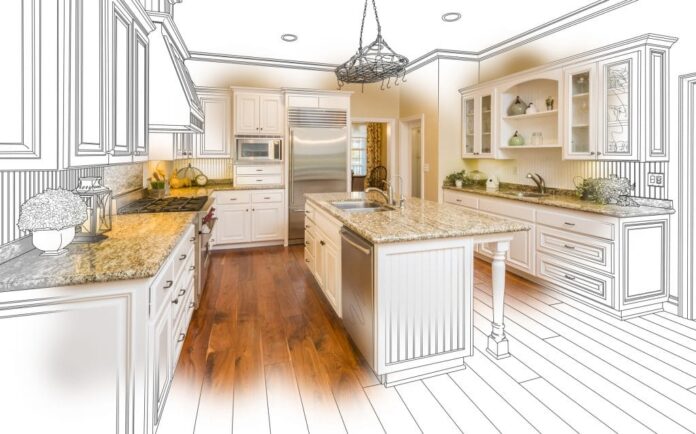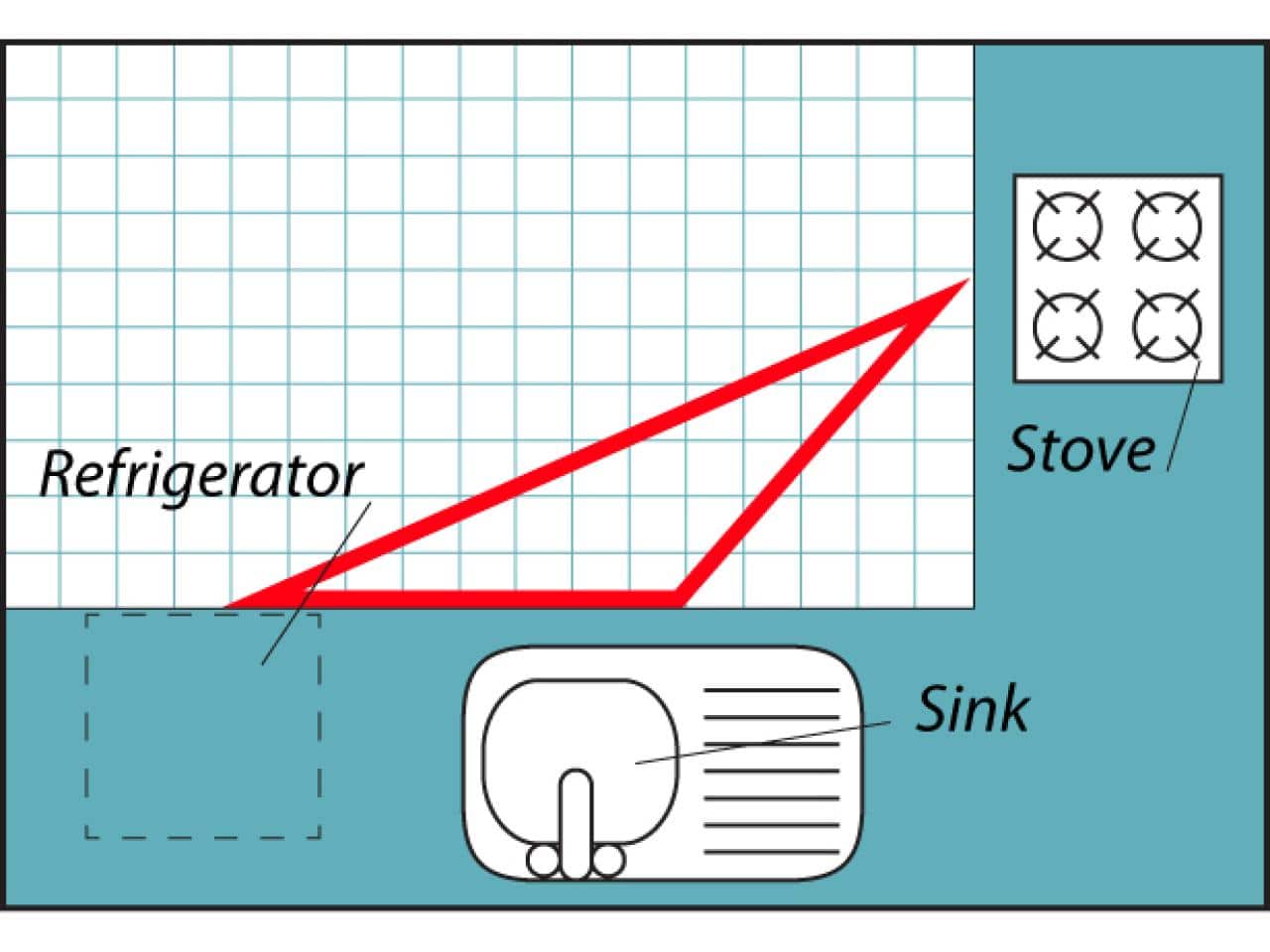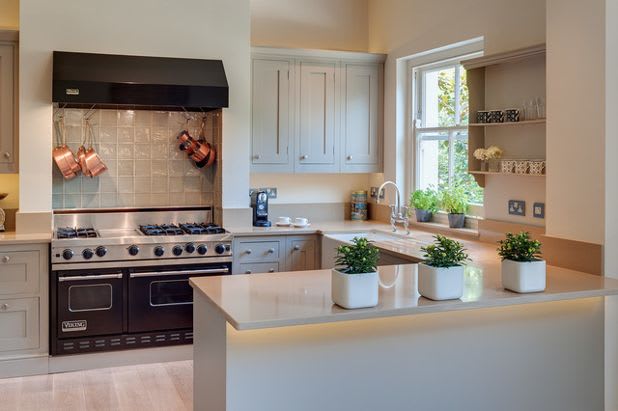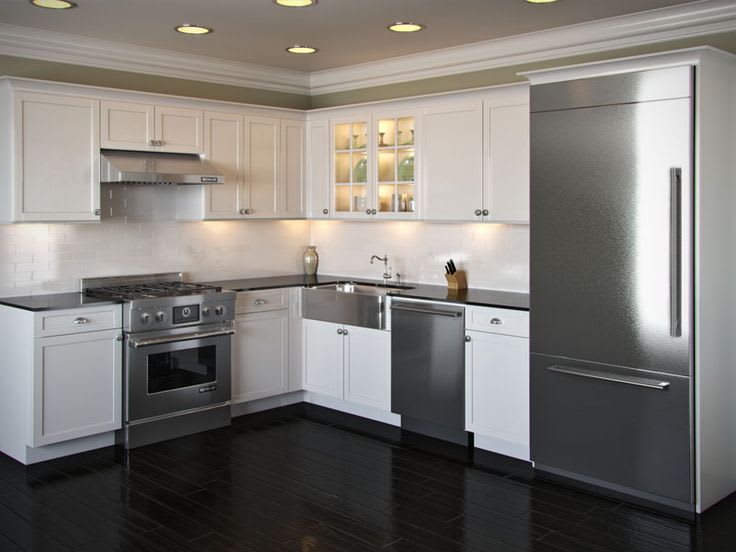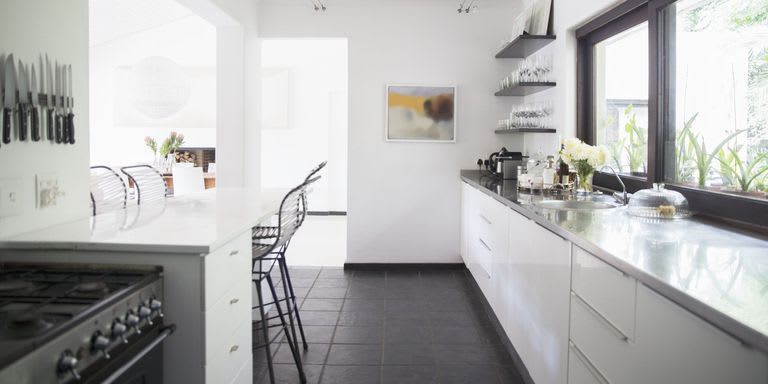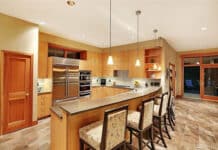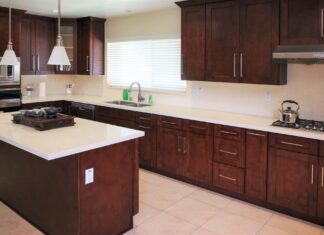Determining the optimal kitchen layout for your remodel or new food prep area may be the single most important step to your future cooking happiness.
Important aspects of your new kitchen include elements such as the economy of space, the ease of use, comfort, and inspiration you receive from the environment. All this will contribute to your knowledge and know-how in designing your kitchen layout.
Basic Kitchen Layouts Pros and Cons
Striking the right balance between function and form is significant but varies greatly from one homeowner to the next.
Do you intend to use your kitchen almost exclusively as a food preparation space, or is it also a social area? How much cabinet access does your cooking demand? Understanding the key benefits of the basic kitchen layouts will help you decide on your final design.
A Quick Note on the Work Triangle
No discussion of kitchen layouts is complete without a brief mention of the work triangle concept.
In the 1920s, Lillian Moller Gilbreth, an engineer and industrial psychologist, conducted a study of optimizing kitchen layouts. Her research revolved around motion savings, which resulted in the kitchen work triangle.
Every available layout of your new or updated kitchen corresponds to the work triangle. The three points of the shape relate to the essential tasks performed there: cooking, cleaning, and food storage.
When you visualize your kitchen from above, you can mentally draw a triangle between the refrigerator, stove/oven top, and sink to visualize its use.
As we explore the fundamental kitchen layouts, consider how the work triangle is affected. You don’t want to get lost in your Bermuda Triangle while preparing a meal!
U-Shaped Kitchen Layout
The U-shaped kitchen layout is the traditional cozy setup for many older houses and smaller living accommodations today. These kitchens often summon the image of a quaint British kitchenette filled with intoxicating scents around dinner time.
While they can often be a necessity in smaller abodes, the U-shaped layout, with the addition of an island, is also used in larger modern kitchens.
Advantages of the U-Shaped Kitchen
The distribution of shaker-style cabinets across three nearby walls can provide tremendous access to all of your cooking utensils and spices.
This space can provide a functional solo chef with an excellent opportunity to flex your talents without disruption. The sink, fridge, and cooking top are nearby (remember that triangle!), so you can maintain a flurry of activity without moving much.
Disadvantages of the U-Shaped Kitchen
The close quarters of a U-shaped kitchen are not for everybody. That advantageous access to all your storage and work triangle components may sometimes feel stifling.
Interestingly, larger U-shaped kitchens can offer the opposing problem: the inconvenience of moving so much without much extra use for the added space. Most homeowners relieve their issues with the close quarters by improving their available cabinetry to get every last bit of available space to move around in.
L-Shaped Kitchen Layout
Are you absolutely enamored with an open-concept kitchen? If your kitchen remodel aims to turn the space into a hub for the family or guests to interact, then an L-shaped layout may be for you.
This kitchen setup exchanges some of the raw efficiency of the U-shaped layout’s proximity of storage for an open scheme. The work triangle remains approximately the same in most cases, depending on the exact distribution of your cooking areas.
Advantages of the L-Shaped Kitchen
Two walls or cabinetry sections combined with the commonly found island in L-shaped kitchens still provide significant storage for your cooking needs.
Indeed, the spaciousness of these setups recommends islands more than the other available layout varieties. With this setup, you can also consider straying away from the work triangle concept and opting instead for discrete work zones for your food prep.
Disadvantages of the L-shaped Kitchen
Certain homes may not benefit from an island in an L-shaped kitchen. If the kitchen space must also accommodate a dining area, you could lack sufficient storage capacity. Optimizing your cabinetry can make a world of difference if you need to optimize available storage space.
Galley Kitchen Layout
The third fundamental kitchen layout is a bit of an odd duck; some homes demand an open design that intersects your work triangle.
In this setup, your kitchen has two opposing walls and an open walkway between other rooms or an exterior space. The feel of the area combines the L- and U-shaped layouts, creating a sense of coziness on top of a more open area.
Advantages of the Galley Kitchen
In some cases, the galley kitchen represents the most efficient distribution of your cooking space. With the ability to store items behind and ahead of you, your kitchen experience can involve little movement.
The environment may also feel warmer and more social, with access on both sides to additional regions of your home. Working back-to-back in the kitchen with two cooks can feel more dynamic and entertaining.
Disadvantages of the Galley Kitchen
Being the captain of your galley kitchen can have its drawbacks. The fun extra access point can lead to extra foot traffic through your work triangle at inopportune times.
If you have limited space, this can be an easily disrupted setup as you have to use the other half of your kitchen behind you.
Discover Your Layout and Solve the Little Problems
Ultimately, when you design your kitchen layout, it should reflect your favorite use for the area. Accounting for your available space, solving unique storage issues, and ensuring you get everything out of your kitchen should be a FUN problem!
Knowing the pros and cons of the available layouts should help you move forward. If you need help designing your kitchen, fear not. Head to our free design request page, and we’ll help you throughout your kitchen remodel.

